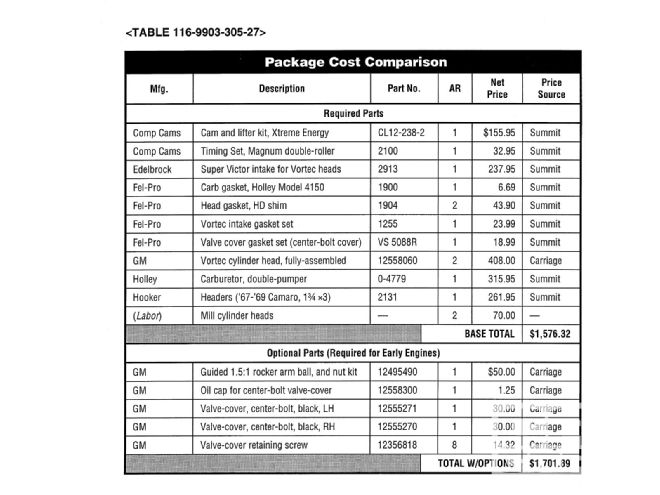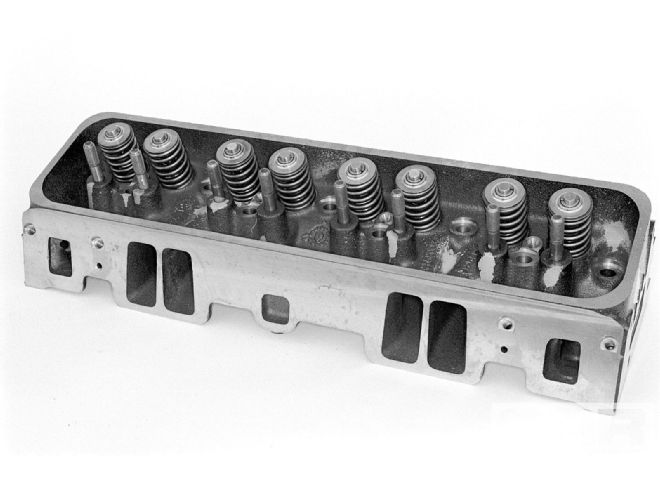
When people ask about rebuilding 305 Chevys, our usual response is "Scrap it-it costs the same to rebuild a 350 and you'll make more power." We'll stick with that opinion for rebuilds. But what about all the good-running 305s in millions of cars and trucks? And how about all those leftover 305s that can be had for nearly free anywhere in the country?
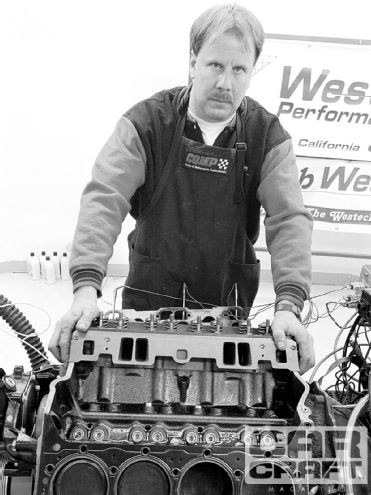
We had to know if easy bolt-on speed parts could save this dog of an engine for an affordable price. A friend gave us a free 80,000-mile 305 out of an '82 Camaro, so we trundled it to Westech's SuperFlow engine dyno and threw a bunch of parts at it. The results may surprise you-they did us.
"Nader" Of Performance
With 8.6:1 compression and a grossly mild hydraulic cam, a stock LG4 '82 Camaro 305 wheezed out 145 net hp at 4,000 rpm and only 165 lb-ft of torque at 4,200, as installed in the car complete with a catalytic converter. Mounted on Westech's dyno, ours breathed through headers and 3-inch dual pipes feeding Flowmaster mufflers. A noncomputer HEI with 22 degrees of advance in the distributor was used for this and all subsequent tests, and the engine was run on generic 89-octane gas. Carb calibration and initial lead was optimized as needed. In otherwise stock form, the engine made 197.3 dyno hp at 4,600 rpm, with 261.3 lb-ft of torque at 3,100. The headers were probably worth 30 hp, with the rest of the increase attributable to the differing net versus gross power correction factors.
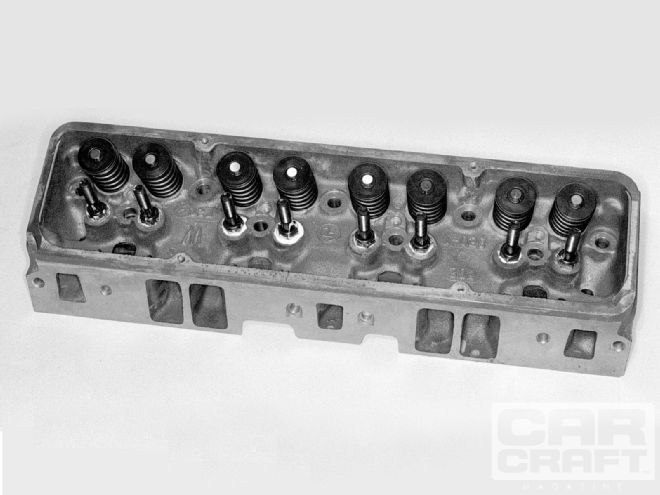 With headers, a Q-Jet carb, and a stock cast-iron GM intake, the engine baselined at 197 hp and 261 lb-ft of torque. These numbers were achieved with 13 degrees of initial advance. The engine was extremely timing sensitive, with the best advance varying per combination.
With headers, a Q-Jet carb, and a stock cast-iron GM intake, the engine baselined at 197 hp and 261 lb-ft of torque. These numbers were achieved with 13 degrees of initial advance. The engine was extremely timing sensitive, with the best advance varying per combination.
Outstanding Performers
We began by bolting on an Edelbrock Performer EGR intake but with the EGR blocked off. Up went the output: 216.6 hp at 4,200 rpm and 284.8 lb-ft of torque at 3,300-3,400 rpm. Peak power increased by 19.3 hp, and the rpm at peak dropped to a friendly 4,200 rpm from 4,600. Average power through the curve improved by 14.9 hp and 21.2 lb-ft.
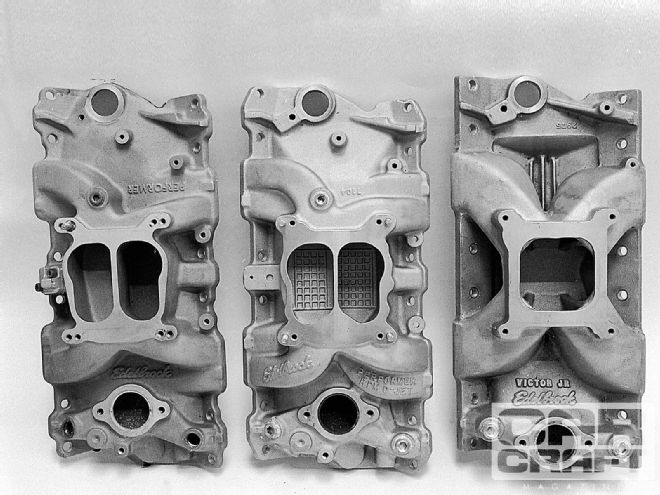 Intakes, from left: We tried Edelbrock's Performer, Performer RPM Q-jet, and Victor Jr. on the still-stock engine. The Performer RPM Q-jet and (with a Holley 750 double-pumper) the Victor Jr. performed best. The RPM gained 34 hp and 24 lb-ft over the stock intake.
Intakes, from left: We tried Edelbrock's Performer, Performer RPM Q-jet, and Victor Jr. on the still-stock engine. The Performer RPM Q-jet and (with a Holley 750 double-pumper) the Victor Jr. performed best. The RPM gained 34 hp and 24 lb-ft over the stock intake.
In theory, the Performer is the hot choice with the wimp cam-but in this case, switching to an Edelbrock Performer RPM Q-jet manifold woke up the engine even more. Compared to the standard Performer, the RPM made equal or better numbers throughout most of the test range. The big gains occurred over 4,200 rpm, where the RPM churned out 15-20 more lb-ft and 10-20 more hp. Peak numbers for the RPM were 230.9 hp at 4,800 and 285.2 lb-ft at 3,300.
Make Room For Jr. Against all practical advice, we tried Edelbrock's Victor Jr., a competition-style single-plane with an under-runner air gap. We tried it with both the Q-jet, which gave up some power and torque, and with a Holley 750-cfm double-pumper carb. The Victor Jr. with the Holley closely matched the Performer RPM with the Q-Jet through most of the rpm range, averaging less than 1 number difference overall. This was surprising, since the high-rise single-plane would usually be considered the worst possible choice for a stock 305. Even so-as in all previous tests-the engine idled with 20 inches of vacuum! Still, the Performer RPM would be a better choice on an otherwise stock engine because it has provisions for exhaust-manifold heat, accepts stock bracketry, and probably offers better low-rpm throttle response.
Xtreme Measures With the Victor Jr. and the 750 Holley looking good even with the stock cam, we decided the single-plane would be the smart move with a hotter cam. A 305 has 45 less cubic inches than a 350, so it requires conservative camshaft selection. Westech selected Comp Cam's dual-pattern XE262H-10 Xtreme Energy hydraulic flat-tappet profile. The choice was influenced by the desire to match the flow characteristics of the cylinder heads we planned to try later. In view of the future head swap, we retained the tired old valvesprings when testing with the stock heads.
With just the cam swap, would you believe we saw a 41.5hp gain with virtually no loss of peak torque? That's with 16 degrees of initial timing. The Xtreme Energy cam made more power above 3,300 rpm, with its advantage increasing as it moved up the rpm scale. Its 269.8hp peak occurred at 5,100 rpm, 400 rpm higher than with the stock cam. Above-3,500-rpm torque was way up too. All this and the engine still made 14.5 inches of vacuum idling at 950 rpm. We tried a 1-inch spacer plate, but it made no significant difference.
 An incredible deal, GM's Vortec L31 heads are available fully assembled for about $200 each. Even with the 1.94/1.50-inch valves, they flow more air than the Bow Tie 2.02/1.60-valve cast-iron heads (2.02/1.60 valves in heads with stock valve angles won't clear a 305's small 3.736-inch bore, anyway).
An incredible deal, GM's Vortec L31 heads are available fully assembled for about $200 each. Even with the 1.94/1.50-inch valves, they flow more air than the Bow Tie 2.02/1.60-valve cast-iron heads (2.02/1.60 valves in heads with stock valve angles won't clear a 305's small 3.736-inch bore, anyway).
The Class Of The Heads Chevy 305s came with only 1.84-inch intake and 1.50-inch exhaust valves. Fortunately, there is an effective upgrade available in the form of '96-'97 Chevy truck L31 Vortec heads with 1.94-/1.50-inch valves. The cast-iron heads' intake and exhaust ports are similar to the late-model Corvette aluminum LT1 heads, but unlike the LT1 heads, they bolt onto conventional small-blocks. The Vortec's greatest improvement is on the intake side, which is why we chose the dual-pattern cam with its slightly larger exhaust lobes.
There are several minor hassles when using Vortec heads. First, they have a unique intake manifold bolt-pattern requiring a dedicated (and more costly) GM or aftermarket intake. Also, early small-blocks must switch to '87-and-later center-bolt valve covers and late-model guided rocker arms. The heads' 64cc chambers must be milled to avoid compression loss on a 305, and the larger-diameter chamber outline requires 350 head gaskets, which could also cause reduced compression. To solve this, we milled the heads 0.045-inch and used thin 0.015-inch head gaskets and got just over 10.0:1 compression. We had no detonation problems on the dyno even with 89-octane gas.
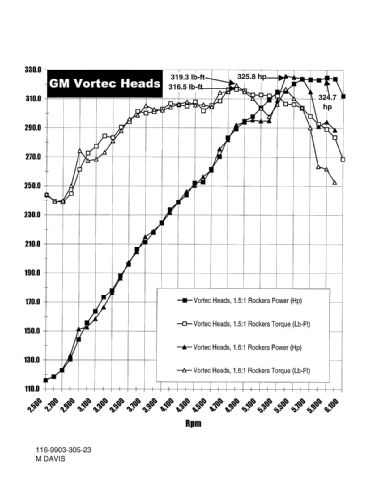
With the same Holley 750 double-pumper on Edelbrock's new Super Victor single-plane intake, the Vortec heads blew away the stockers at power points above 3,400 rpm. They churned out 316.5 lb-ft at 4,800, raising the torque peak by 1,100 rpm in the process. Torque production was over 300 lb-ft between 3,600 and 5,600 rpm, nearly as flat as a billiard table. At peak, the Vortec combo made 324.7 hp at 5,800 rpm, a gain of 54.9. And like the torque curve, it maintained the power output, producing over 300 hp from 5,100-6,100 rpm. Under-3,000-rpm numbers were down slightly, probably because the Super Victor is optimized for the midrange and upper rpm band.
Finally, we tried 1.6:1 rockers in place of the 1.5:1 stockers. They showed no significant gains.
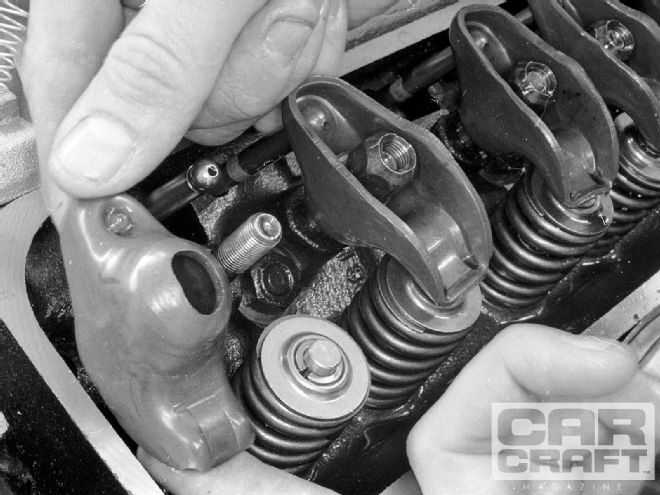 With loose-tolerance pushrod clearance holes and no provisions for guideplates (the studs are pressed into the heads), Vortec heads require GM guided rockers (note bumps) or aftermarket equivalents.
With loose-tolerance pushrod clearance holes and no provisions for guideplates (the studs are pressed into the heads), Vortec heads require GM guided rockers (note bumps) or aftermarket equivalents.
Gain Without Pain
At this point, our 305 was up 127 hp and 55 lb-ft from the original dyno baseline, and 180 hp and 77 lb-ft over the stock net ratings. Backed by low gears and a loose converter, this engine ought to surprise plenty of 5.0L Mustangs. At least it'll get you by while you save up to build a 350!
Another 305 Option
Once we put together the 305 combo outlined in this story, we realized that many of you already have a 305 with typical bolt-ons in a GM A-, G-, or F-body. For this type of application, World Products offers 305 S/R Torquer cylinder heads that may save you some bucks. They run about $599 complete from Aerohead-that's more than the GM Vortec heads, but the price may only be higher if you're trying to duplicate our 305 engine combo from scratch. The bolt-on World Products will save money if you already have an aftermarket intake and rocker arms and don't want to pay extra for the dedicated intake, rockers, and late-model valve covers required by the Vortec heads. The World heads are available in either the early or late intake bolt-pattern and come with 58cc chambers so they don't need to be milled to maintain a good compression ratio on a 305. Vortec heads definitely need to be milled.

Another issue with the 305 S/R Torquer heads is that the valve angles are altered to assure no valve-to-cylinder-wall clearance problems. That may mean that larger 2.02/1.60 valves can be installed-but there's a heavy emphasis on the may, since we haven't tried it. The heads come complete with 1.94-/1.50-inch valves and valvesprings, and have screw-in studs, which the Vortec heads don't. World's 305 heads use conventional valvesprings; the Vortec units require new ovate-wire springs in a smaller diameter.
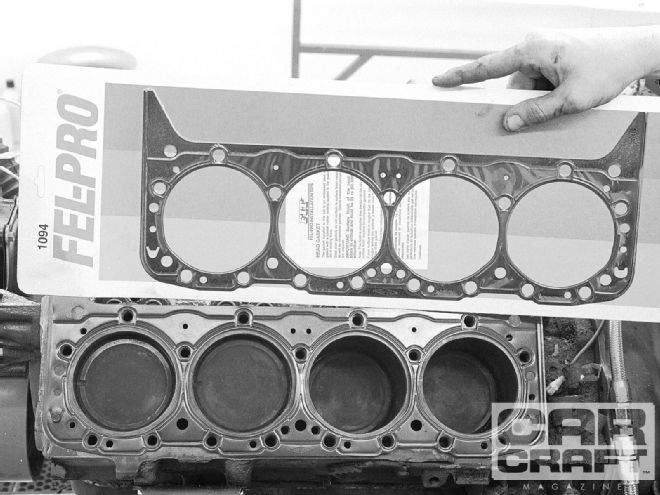 The Vortec heads were decked 0.045-inch to yield 55cc chambers, then installed with Fel-Pro's 0.015-inch-compressed-thickness head gaskets (PN 1094) to achieve a bit over 10.0:1 compression. The steel-shim gasket has a precision rubber coating-for long-term use, install them with sealant.
The Vortec heads were decked 0.045-inch to yield 55cc chambers, then installed with Fel-Pro's 0.015-inch-compressed-thickness head gaskets (PN 1094) to achieve a bit over 10.0:1 compression. The steel-shim gasket has a precision rubber coating-for long-term use, install them with sealant.
We tested the World 305 heads on our dyno mule along with the standard Victor Jr. intake, the Holley 750, and the Comp Xtreme Energy 262 cam. In this configuration, we made 297.6 hp at 5,500 rpm and 308 lb-ft at 3,900 rpm-healthy for a little engine. These numbers can't be compared fairly to the 325-horse/316 lb-ft numbers with the Vortec heads because the intake-manifold design was slightly different.
For more information, contact World Products, Dept. CC, 35330 Stanley Dr., Sterling Heights, MI 48312-2654, 810/939-9628, www.goracing.com/world
What'll It Cost Me?
The total cost of the Vortec cylinder-head package depends on your small-block's vintage. If you already have '87-and-up center-bolt valve covers and guided rocker arms, you can put this package together for about $1,575. Figure on spending up to $125 more if you need the extra parts and want to buy them new. You could save money scoring good late-model parts from a salvage yard.
